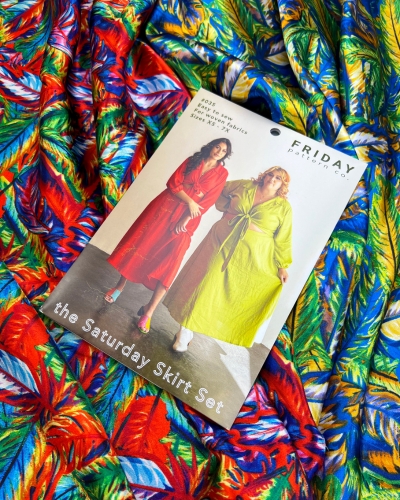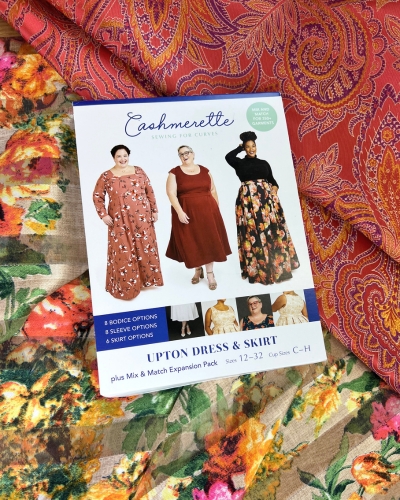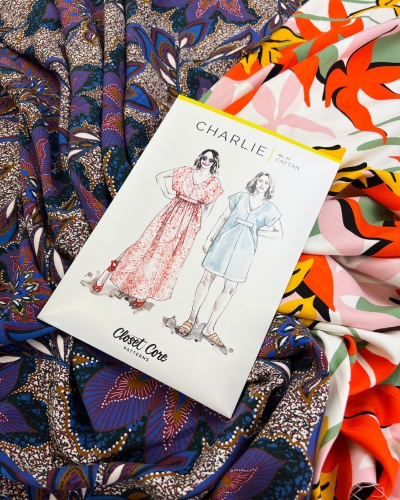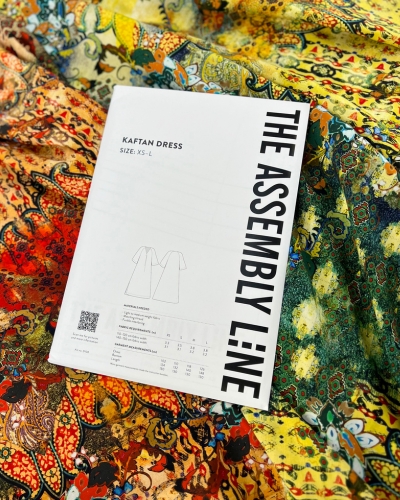Exploring African Boubou Fashion: Fabrics & Dress Patterns
Welcome to our captivating exploration of African boubou fashion, inspired by the upcoming episode of "The Great British Sewing Bee." We must confess that collectively, we had a very limited knowledge regarding this fabulous area of fashion but we’ve been browsing through the history, trends and the culture surrounding boubou and found it so interesting that we thought we’d share with you a very brief introduction.
In this blog, we look at intriguing traditions and a mesmerizing array of colours that has gripped our imagination. Prepare to be enchanted by the exquisite craftsmanship, cultural significance, and vibrant palette that define this extraordinary sartorial heritage.
History of Boubou
The African boubou, also known as a bubu or grand boubou, is a traditional clothing style that is commonly worn in many countries across West Africa. It is a flowing, loose-fitting garment that is often made from colourful and vibrant fabrics. The boubou is worn by both men and women and is considered a symbol of African cultural identity and heritage.
The boubou typically consists of three parts: a large gown-like robe, a matching pair of wide-legged pants, and a coordinating headpiece or cap. The gown is usually long, reaching down to the ankles, and has wide sleeves. It is often decorated with intricate embroidery, patterns, trimmings or prints that reflect the cultural traditions of the wearer's ethnic group or region.
.jpg)
Boubous are worn on various occasions, including religious ceremonies, weddings, festivals, and other formal events. They are also worn as everyday attire, particularly in rural areas. In some countries, such as Senegal and Mali, the boubou is considered the national dress and holds deep cultural significance.
The boubou (like most fashion) has evolved over time, incorporating modern styles and influences while still retaining its traditional essence. Today, you can find contemporary variations of the boubou that feature different cuts, designs, and embellishments. It has also gained popularity outside of Africa and is often seen as a fashionable and stylish garment.
In addition to its cultural significance, the boubou has also become an important symbol of African unity and pride. It represents a connection to African heritage, traditions, and values.
 |
 |
 |
 |
Party In Rio & Friday Pattern Co. Saturday Skirt Set |
Claudia | Coral Paisley Brocade & Cashmerette Upton Dress |
Vicose Twill & Closet Core Charlie Kaftan |
Festival Sundown & Assembley Line Kaftan Dress |
Recommended Boubou Fabrics
The fabric used to make boubous varies widely, on the region, cultural traditions, and personal preferences of the wearer. They can range from cotton and silk to brocade and damask. African wax prints, known for their bold and vibrant patterns, are commonly used in boubou designs. These fabrics are often locally produced and hold significant cultural and symbolic meaning within African communities.
Here are some commonly used fabrics for making boubous:
- Cotton fabric is widely used in African boubous. It is lightweight, breathable, and comfortable, making it suitable for various weather conditions.
- Silk is a luxurious fabric that adds elegance to boubou designs. It has a smooth and lustrous texture and is often used for special occasions or formal events.
- African wax prints, also known as Ankara or Dutch wax prints, are popular fabric choices for boubous. They are vibrant, colourful fabrics with bold patterns and designs. African wax prints are made using a wax-resistant dyeing technique and are known for their distinctive look. You can get the same look with some of the Indian Batiks.
- Brocade is a richly patterned fabric that adds a touch of opulence to boubous. It is characterized by raised designs woven into the fabric and often features metallic threads.
- Damask is another fabric commonly used in boubou making. It is a reversible figured fabric known for its elaborate patterns and high-quality weaving techniques
- Adire is a traditional hand-dyed fabric that originated in Nigeria. It is made using resist-dyeing techniques, resulting in unique and intricate patterns. Adire fabrics are often used for boubous in Yoruba culture.
- Kente cloth is a Ghanaian textile that is highly symbolic and prestigious. It is woven in vibrant, multicoloured strips and often used for special occasions or ceremonial boubous.
- Bogolanfini (Mud Cloth) is a traditional Malian fabric made by dyeing the cloth with fermented mud. It has distinctive geometric patterns and is often used for boubous in West Africa.
It's important to note that the choice of fabric for boubous can vary depending on personal preference, availability, and cultural significance. Different regions and ethnic groups may have their own unique fabrics and techniques that they prefer to use for boubou making.
Well we hope you found this as interesting as we did and we’ll certainly look forward to this weeks episode of The Great British Sewing Bee!
In the meantime take a look at our collecton of products as seen on and inspired by The Great British Sewing Bee
.jpg)
.jpg)
.jpg)
.jpg)
.jpg)
.jpg)
.jpg)
.jpg)